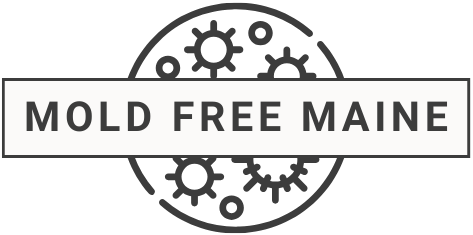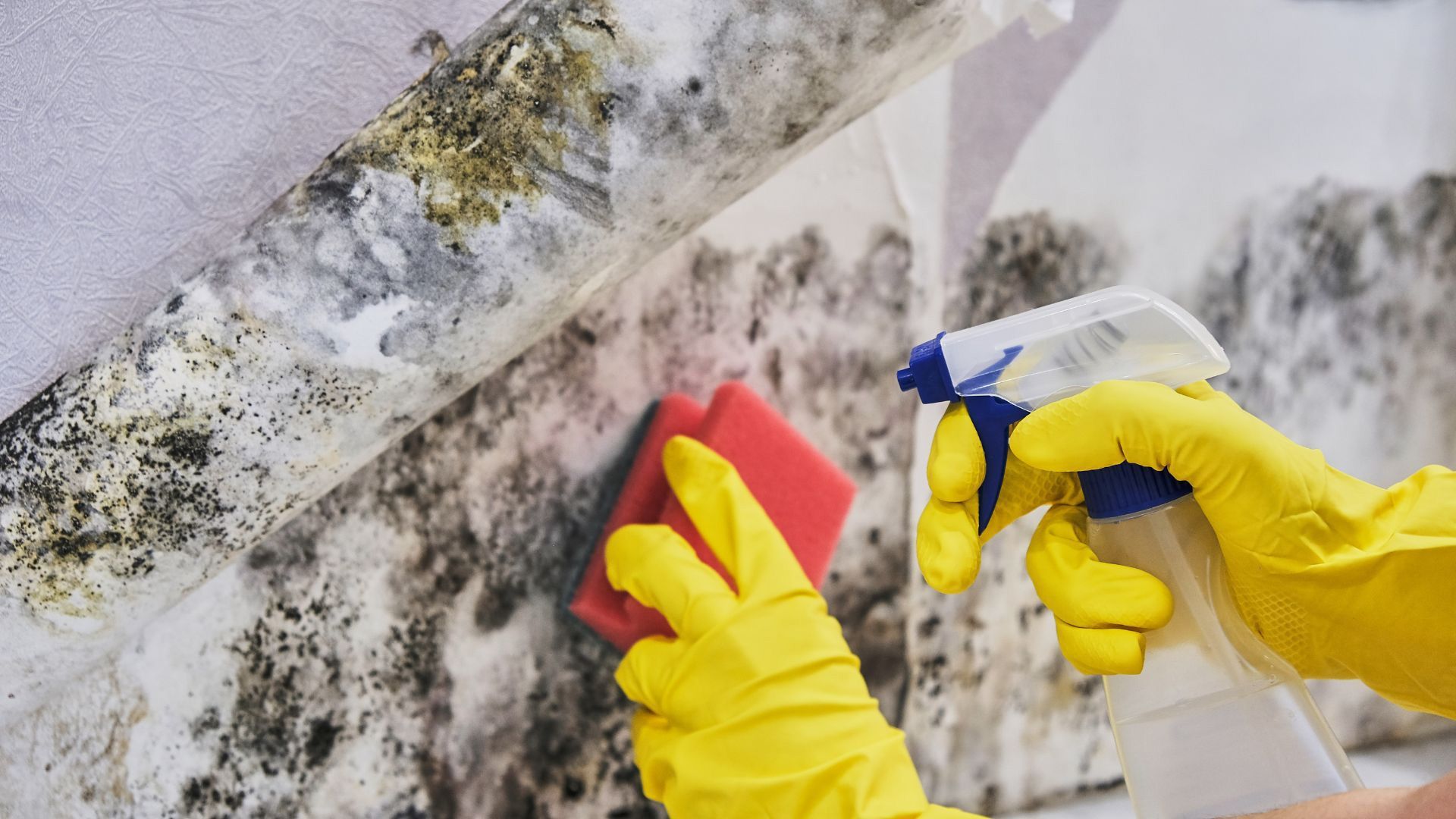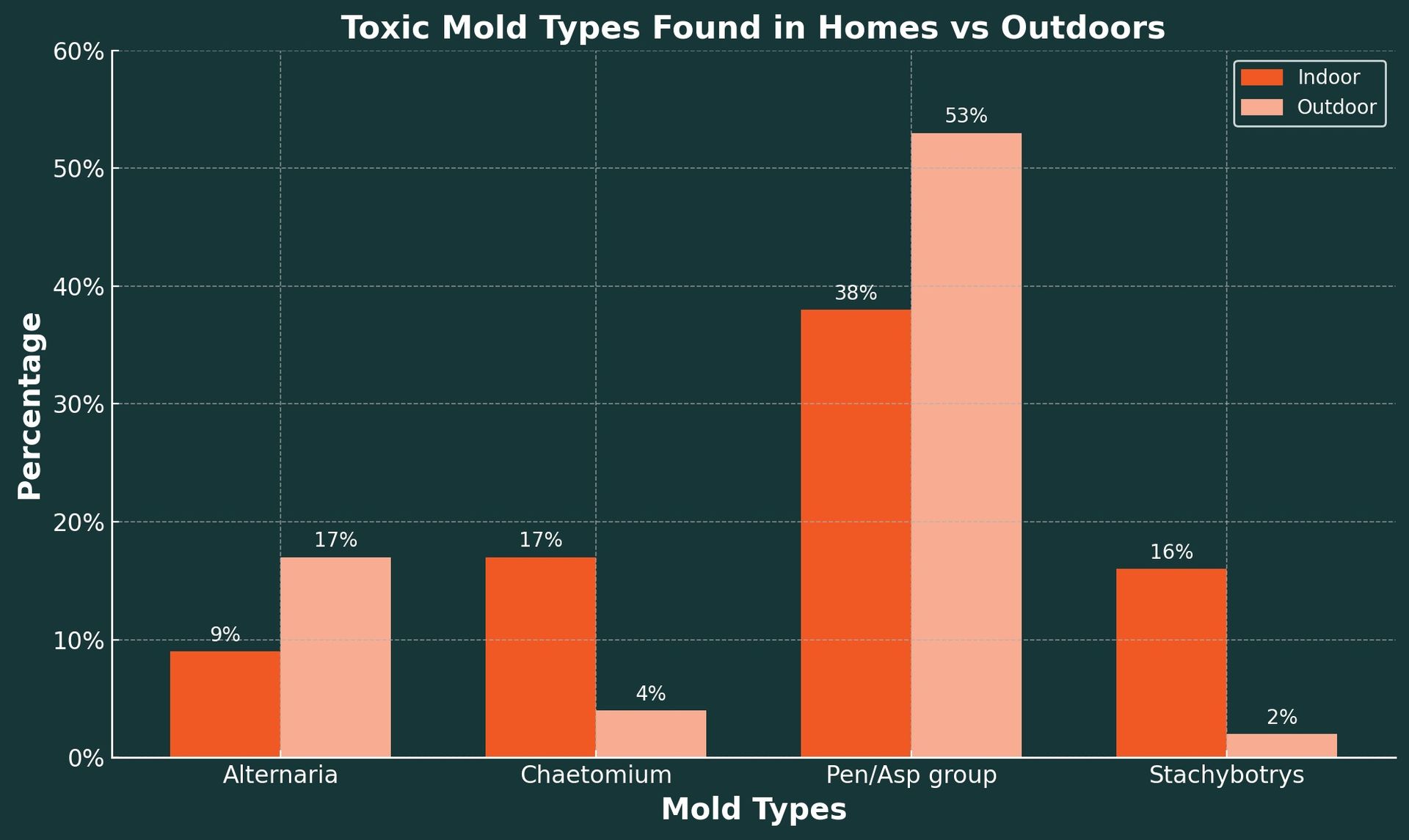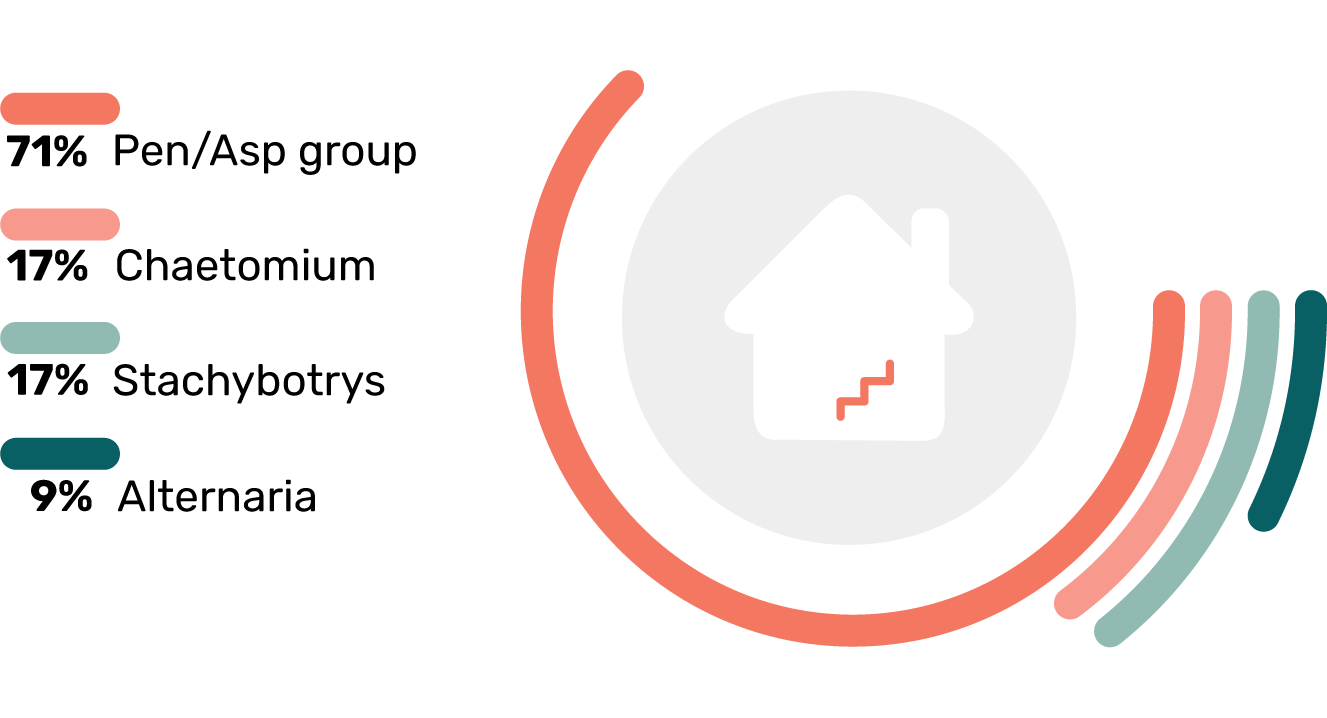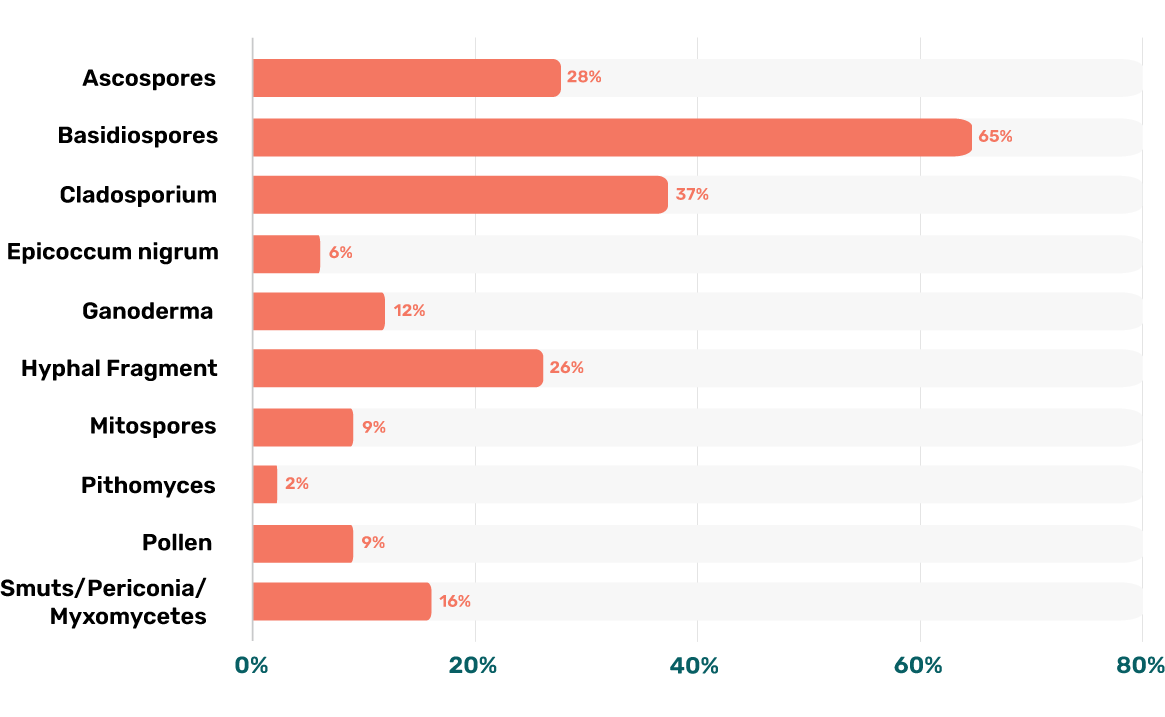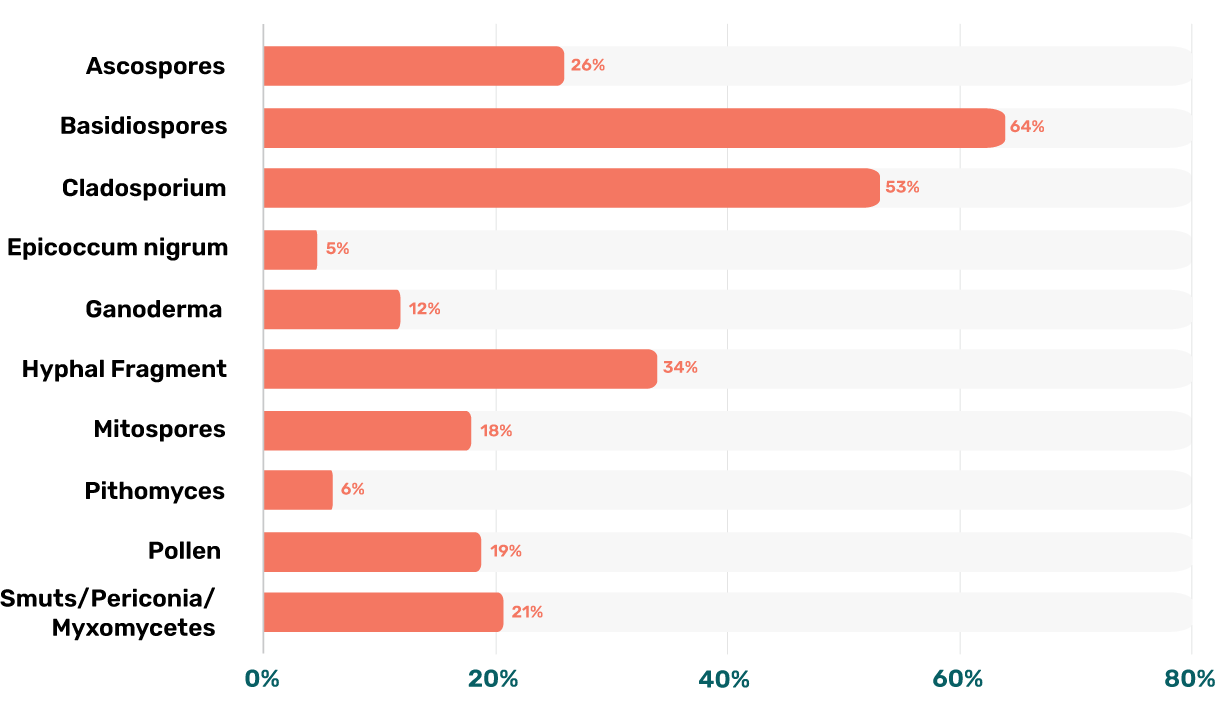Mold Statistics
What is The Most Common Toxic Mold Type Indoor?
Our primary objective was to pinpoint the most common toxic molds infiltrating our personal and professional environments. We delved into the occurrence of hazardous mold strains such as Stachybotrys, Chaetomium, Fusarium, the Penicillium/Aspergillus group, and Alternaria, with a keen focus on identifying the specific home areas most susceptible to these threats.
Here are the insights gained from our research.

Key Findings
- Penicillium/Aspergillus mold group is the most common toxic mold type in homes, appearing in 38% of tested air samples.
- Stachybotrys (black mold/toxic black mold) was found in 16% of indoor air samples.
- Basidiospores and Cladosporium molds were found in 27% of all indoor air quality tests.
- Basements showed a high presence of Penicillium/Aspergillus mold group in 71% of air tests.
- Bathrooms were primarily affected by Basidiospores, with a 64% presence in air tests.
- 89% of bedrooms tested showed some presence of mold.
- Kitchens were frequently affected by the Penicillium/Aspergillus mold group, found in 57% of air samples.
- Offices had a 64% presence of Basidiospores in air quality tests.
- 88% of indoor air quality samples tested positive for some type of mold.
Indoor and Outdoor Mold Stats: What You Need to Know
Toxic molds, identified as early as 1837, exist both inside our homes and in the outdoor environment. These plant-like organisms emit toxins as a defense mechanism to shield themselves from harm, potentially leading to allergies, respiratory problems, and other health issues in humans. Contact with these molds poses significant risks, making it crucial to identify and address any signs of mold on your property or in your food by reducing moisture and decluttering areas where molds can thrive.
Our findings affirm that toxic molds are prevalent in both indoor and outdoor settings, although not every type of toxic mold is more commonly found indoors.
Toxic Mold Types Found in Homes
- Alternaria (9%)
- Chaetomium (17%)
- Penicillium/Aspergillus group (38%)
- Stachybotrys (16%)
Only 12% of tested homes didn’t have any presence of mold.
Toxic Mold Types Found Outdoors
- Alternaria (17%)
- Chaetomium (4%)
- Penicillium/Aspergillus group (53%)
- Stachybotrys (2%)
Only 6% of tested outdoor air samples didn’t have any presence of mold.
Mold Types Found Indoors and Outdoors
Mold Types Found in Homes
- Basidiospores (27%)
- Cladosporium (27%)
- Hyphal Fragment (25%)
- Smuts/Periconia/Myxomycetes (19%)
- Mitospores (17%)
- Pollen (15%)
- Ascospores (14%)
- Ganoderma (9%)
- Epicoccum nigrum (7%)
- Pithomyces (7%)
Mold Types Found Outdoors
- Basidiospores (76%)
- Cladosporium (67%)
- Ascospores (59%)
- Hyphal Fragment (37%)
- Ganoderma (32%)
- Pollen (28%)
- Smuts/Periconia/Myxomycetes (28%)
- Epicoccum nigrum (12%)
- Mitospores (10%)
- Pithomyces (5%)

Mold in Maine Basements
The basement often serves as a prime breeding ground for mold due to its typically damp and dark conditions. While mold can thrive in various environments, basements are particularly vulnerable to infestation.
Unchecked mold growth can deteriorate your possessions and significantly harm your home's structure. Preventing mold is much simpler and more cost-effective than remedying its damage after it has been allowed to spread. Basements without proper ventilation suffer from stagnant air and recurring moisture, fostering an ideal setting for mold proliferation.
Among the diverse environments where toxic mold can reside, certain species are notorious for producing mycotoxins, leading to serious health issues. These include flu-like symptoms, memory loss, allergic reactions, and even neurological disturbances such as irritability and depression.
Molds belonging to the Penicillium/Aspergillus genus are the most common toxic molds found in basements, underscoring the need for vigilant moisture control and adequate air circulation in these areas.

Bathroom Mold is Everywhere
Mold in bathrooms is becoming an increasingly serious issue across the United States. The Environmental Protection Agency has noted that toxic mold is prevalent in all 50 states and across Canada, thriving in any location with sufficient moisture, including bathrooms.
Research indicates that the average individual spends upwards of three hours daily in their bathroom, often unaware of the potential health risks posed by mold. Water damage is a common avenue through which mold infiltrates bathrooms, where it can then multiply quickly. Recognizing the signs of mold growth is straightforward, provided you know what to look for.
Stachybotrys, a particularly harmful type of mold, is in nearly one in every six bathrooms.
The Surprising Statistics About Kitchen Mold
Mold commonly takes root in areas that are moist and damp, with kitchens being one of its favored environments. It flourishes on spoiled food or items left out for extended periods. The presence of leaks or stagnant water in your kitchen significantly heightens the risk of encountering toxic mold. This mold is not only a source of spores that may trigger allergic reactions but can also produce mycotoxins harmful to both humans and animals.
Among the various strains of toxic mold that can proliferate in kitchen settings are species such as Cladosporium, Alternaria, and Penicillium.

The Office Mold Statistics You Need to Know
The presence of mold in office buildings represents a significant concern, potentially affecting the health of employees and the financial stability of businesses. A substantial mold infestation in the workplace has been linked to various health issues, such as respiratory ailments and allergic reactions. Beyond aggravating allergies, mold exposure can also provoke asthma attacks, distracting employees from their work responsibilities.
Our Impact in Numbers
2489
Satisfied Clients
2854
Inspections Performed
2134
Remediation Projects Completed
Quick Links
We’re Here for You
- Virtual Inspections
- Emergency Services
- Client Testimonials
- FAQs
- Price Match Promise
© 2023 | All Rights Reserved | Mold Free Maine
